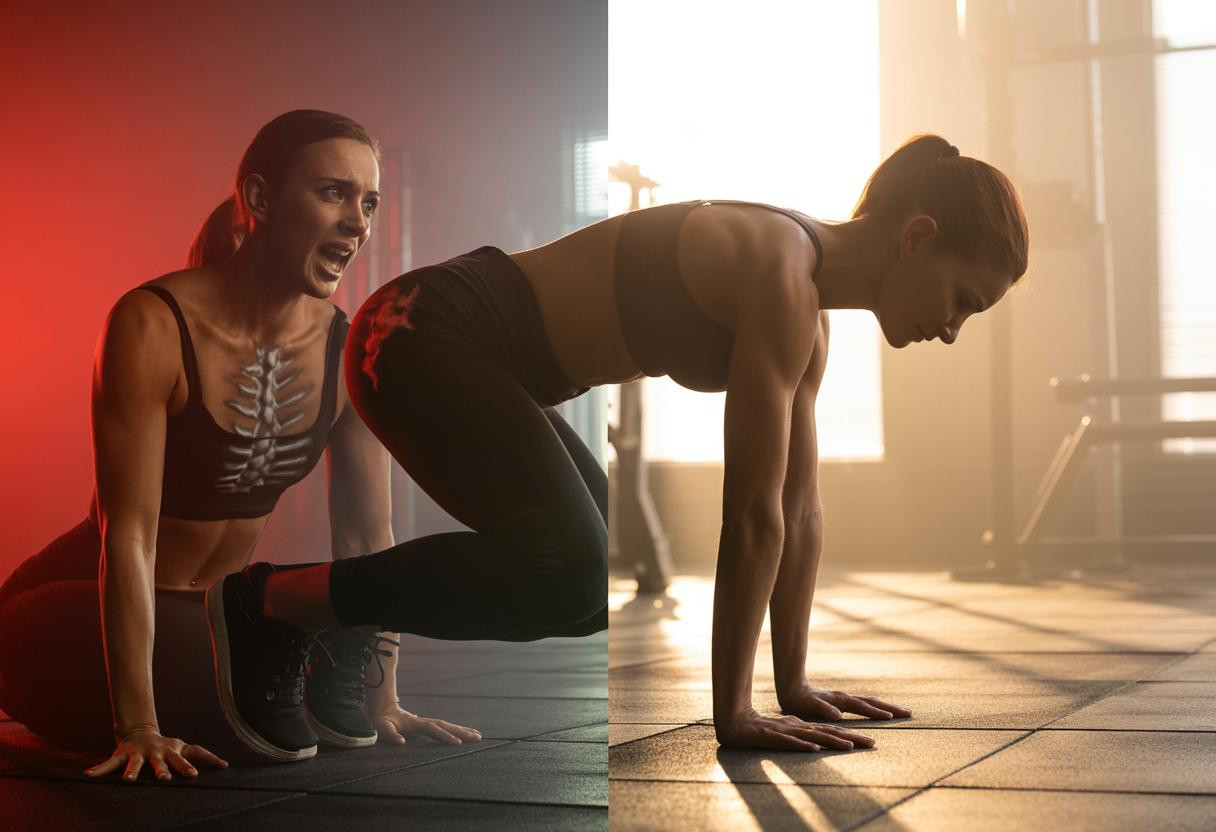Ever noticed that your lower back feels tender after your “killer” glute workout? You’re not alone. As a fitness coach, I’ve seen countless clients chase the burn in their glutes only to end up with compressed lumbar spines instead. What if that popular “glute burner” exercise you’ve been religiously performing is secretly wreaking havoc on your lower back?
The hidden danger lurking in your glute routine
Many popular glute-focused exercises inadvertently place excessive compression on the lumbar spine. According to Dr. Sarah Jenkins, orthopedic specialist at Austin Spine Center, “What many fitness enthusiasts don’t realize is that certain glute exercises, when performed incorrectly, transfer the load directly to the vulnerable lower back structures rather than the targeted gluteal muscles.”
The most common culprit? The hyperextended kickback variation that’s all over social media. When performed with an arched back rather than a neutral spine, this movement can cause dangerous compression of the lumbar vertebrae.
Is your favorite glute exercise silently damaging your spine?
Not all glute exercises are created equal. Spine compression occurs when forces push vertebrae together, potentially leading to disc damage over time. One client came to me after performing daily donkey kicks with an exaggerated range of motion for three months – she’d developed persistent lower back pain that interfered with her daily activities.
“I thought I was strengthening my glutes, but I was actually creating a serious imbalance,” she told me. After modifying her routine with proper glute bridge variations, her pain subsided within weeks.
The anatomy behind the problem
Your gluteus maximus works in concert with your lower back muscles. When one system is overloaded or underperforming, the other compensates. This compensation pattern is like a car with misaligned wheels – you can still drive, but you’re causing progressive damage with every mile.
“The relationship between the glutes and lower back is like a well-choreographed dance,” explains Dr. Michael Chen, physical therapist and movement specialist. “When one partner dominates, the entire performance suffers.”
Warning signs your glute workout is hurting your back
- Persistent ache in your lower back after glute-focused workouts
- Pain that increases with certain movements like bending forward
- Discomfort that lingers more than 48 hours post-workout
- Radiating sensation down your legs
The safe alternatives that actually target your glutes
After seeing multiple clients develop back issues from problematic glute exercises, I’ve developed a safer approach that effectively targets the glutes while protecting the spine. The key lies in maintaining neutral spine alignment throughout the movement.
Consider how single-leg exercises can activate your glutes while improving overall stability. These movements challenge your body’s proprioception without compressing the spine.
Form fixes that make all the difference
- Engage your core before initiating any glute movement
- Keep your spine in neutral position, avoiding excessive arching
- Focus on controlled movement rather than excessive range
- Start with bodyweight before adding resistance
The mobility connection you’re missing
Tight hip flexors often contribute to lower back compression during glute exercises. Daily mobility work can dramatically improve your movement patterns and reduce strain on your lower back.
Much like maintaining the foundation of a house prevents structural damage, addressing mobility restrictions prevents compensatory movement patterns that lead to injury.
Beyond the gym: Protecting your back in daily life
Even with perfect exercise form, other factors might be compromising your back health. Trendy fitness challenges can sometimes do more harm than good, especially those that don’t consider individual anatomical differences.
Remember that what works for a fitness influencer might not work for your unique body structure. Just as certain movements can accelerate knee aging, improper glute exercises can prematurely wear down spinal structures.
Is your pursuit of the perfect posterior worth risking your spinal health? With small adjustments to your technique and exercise selection, you can build strong, functional glutes while keeping your back healthy for years to come. Your body doesn’t care about Instagram aesthetics – it responds to proper biomechanics and thoughtful programming.
